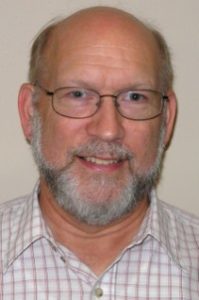Mennonite Health Journal
Articles on the intersection of faith and health
Faith, Health and Community: An Integration
Jim Leaman
from Mennonite Health Journal, Volume 14, No. 2, July 2012
The following article is adapted from the message Jim delivered at the Sunday morning worship service on July 1, 2012 at the Mennonite Healthcare Fellowship Retreat.
Jesus, in his ministry, modeled an integration of health care and spiritual care, as well as one that promoted emotional and relational wholeness. It was a ministry of shalom – the welfare of the totality of one’s being.
The story of the healing of the man who was paralyzed illustrates the integrated healing ministry of Jesus. (Mark 2:1-12) In this account, we see, first, that Jesus was in a house preaching the word. His preaching was bringing the kingdom of God among the people. He invited the poor in spirit to experience the peace which could heal troubled lives. I have come to appreciate the healing aspect of the word, as it affirms who I am as a redeemed person in Christ. I am not under condemnation. I am God’s beloved child in whom he delights. The transformation God’s Spirit has begun in me, he will complete.
Second, the story presents the power of community – a small community of four persons – who brought a fifth person, their friend who is paralyzed, to Jesus. This community of four was creative, carrying their friend past the crowd spilling into the street, up the stairs on the outside of the house, tearing a hole in the brushwood and earthen roof, and letting their friend on his mat down through the hole to place him in front of Jesus. One creative way the community of Christ can bring healing to underserved persons, is to develop church-based health centers, where persons receive both medical and spiritual care.
A third aspect of healing in this gospel story is the offering of forgiveness by Jesus to the man. “Son, your sins are forgiven.” Was the man a great sinner? When the disciples asked once about a blind man, Jesus replied that neither the blind man nor his parents had sinned, causing his blindness, but that this was for an opportunity to reveal the glory of God; and he healed the blind man. Forgiveness is a basic human need of every person. Jesus first forgave and freed the spirit of this man who was paralyzed.
Fourth, Jesus physically healed the man. “Get up, take your mat, and go home,” Jesus said, and the man did just that. As chaplains, we have the privilege of working alongside the interdisciplinary medical, social work, dietary and life enrichment team to bring integrative health care to the residents we serve.
CPE teaches us to work at developing the practice of non-anxious presence with those we provide care for. A fifth aspect of healing in this account was the non-anxious presence of Jesus in a context where the religious elite were exhibiting great consternation towards Jesus, who had declared forgiveness for a hurting man. Jesus stayed self-differentiated.
Finally, the people praised God and worshiped at the conclusion of this experience of integrated healing. “We have never seen anything like this!” they exclaimed.
The good news of God, creative community, compassionate forgiveness, the art of healing, “being present with,” and worshipful awe are six aspects of the ministry of wholistic health care. May you discover ways to partner joyfully in the integrative health care of Jesus where you are serving.
About the author
 Jim Leaman, MDiv, MA, served as a Chaplain at Landis Homes Retirement Community in Lititz, Pennsylvania, serving primarily residents in Personal Care and Health Care. He is past Treasurer of Mennonite Chaplains Association (MCA) and was a speaker at the MHF Retreat (Annual Gathering) at Laurelville in 2012.
Jim Leaman, MDiv, MA, served as a Chaplain at Landis Homes Retirement Community in Lititz, Pennsylvania, serving primarily residents in Personal Care and Health Care. He is past Treasurer of Mennonite Chaplains Association (MCA) and was a speaker at the MHF Retreat (Annual Gathering) at Laurelville in 2012.
